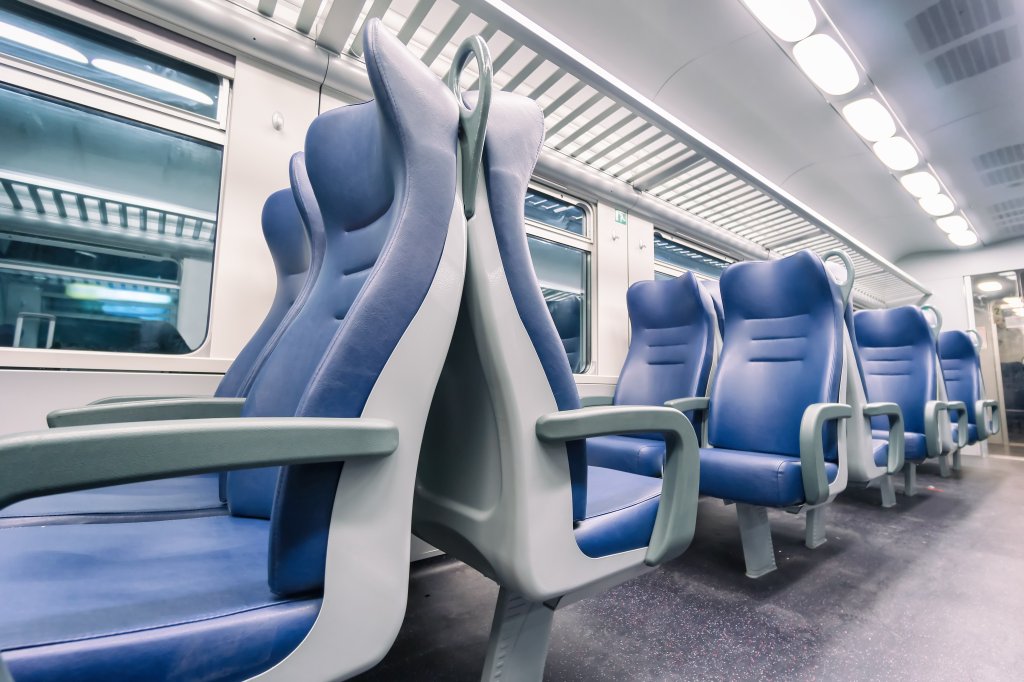Where Plastic is Used in Mass Transit Rail Systems
Plastic is quickly overtaking the mass transit rail manufacturing process. Many plastic materials' durability and lightweight nature allow manufacturers to make reliable and durable trains and train cars with greater speed and fuel efficiency.
So the next time you get on a transit train, whether on a subway or a high-speed train, look around and see where you see plastics. In addition to the ones inside your train car, you will interact with plastics through the lighting covers, rail covers, and more in the train station and on the tracks. So where is plastic used in mass transit rail systems, and what types of plastics work best?
Here is a closer look at these questions and their answers.
What Parts of a Passenger Train Are Plastic?
In decades past, trains were large, cumbersome metal objects that slowly but steadily moved people and products across the country. Today passenger trains are more about comfort and speed, helping get people quickly from point A to point B. As a result, manufacturers are increasingly turning to durable plastics to optimize speed and energy use.
In a passenger train, you will find plastics throughout the train. On the exterior, these components commonly come from plastic:
- Roof panels and cladding
- Side skirts
- External and portal cladding
- Apron flaps
- Paneling
Inside the train, expect to find plastics anywhere possible to reduce the weight of the train, including:
- Walls
- Ceiling panels
- Storage cabinets and bins
- Partitions and windows
- Door pillars and mechanism covers
- Ceilings
- Floor plates
- Air ducts and HVAC
- Seat shells
- Window pillar cladding
Many technical parts are also made from plastic, including:
- Cable clamps
- Holders and spacers
- Guide rails
- Housings and housing covers
- Controllers and other operating elements
- Insulating covers and components
Finally, you will find plastics on the rail infrastructure and the train itself. Look for plastic in:
- Conductor rail supports
- Insulators
- Spacer plates
- cable ducts
- Signal and rail covers
Because of these many different applications, multiple plastic types are used in the mass transit rail industry.
Common Plastics Used in Mass Transit Rail Applications
Multiple plastics are used to create trains, and rail systems, from the clear Plexiglas used in windshields to the rigid, impact-resistant ABS and HDPE used to make walls and storage bins. Some common options include:
Acrylic
Acrylic is a transparent option that can work well for interior glass and mirrors. It also makes clear barriers and is five times stronger than glass. It can withstand the vibrations of rail travel well.
PETG
PETG is a moderate-strength plastic that is easily thermoformed into various shapes. This makes it popular for rail applications requiring the manufacturer to create a specific shape.
ABS
Acrylonitrile butadiene styrene, also known as ABS, is a cost-effective, rigid, and impact-resistant thermoplastic. It resists moisture absorption and is easy to machine or form using heat.
HDPE
High-density polyethylene (HDPE) is a petroleum-based product that resists corrosion, impact damage, and water damage. In addition, it can be cleaned and sterilized easily, making it popular for public areas of transit rail.
Polycarbonate
For windows and windshields, polycarbonate is more robust than the material. It is over 200, stronger than glass, and much lighter, making it ideal for exterior windows that may be impacted by outside debris.
UHMW
Ultra-high molecular weight polyethylene, or UHMW, is eco-friendly, lightweight, and both impact and corrosion-resistant. In addition, it has a low coefficient of friction, making it a good plastic for moving areas of the train, such as open and shut doors.
Kydex
Kydex is a plastic specifically created for the transit industry. It is easy to clean, even if exposed to graffiti, and meets the FTA and FRA requirements for smoke emission and flammability testing. In addition, it is available in over 200 colors, which makes it simple to match the branding of a particular rail company.
Polyester film
Finally, polyester film often finds its sway in the manufacturing of trains. This product is usually made into labels and stickers, which can add advertising and branding to the train car. Anti-graffiti films over train windows are also a popular use of polyester film.
Consult with Piedmont Plastics for Mass Transit Rail System Plastics
There are more plastics that work for the mass transit rail system than just the ones mentioned here. To see the full scope of options available options, discuss your project with one of the plastics experts at Piedmont Plastics.
